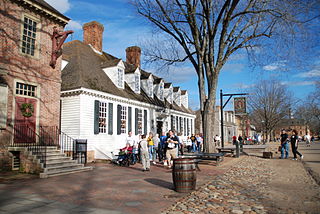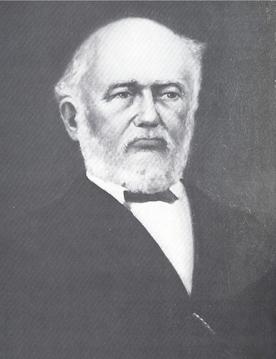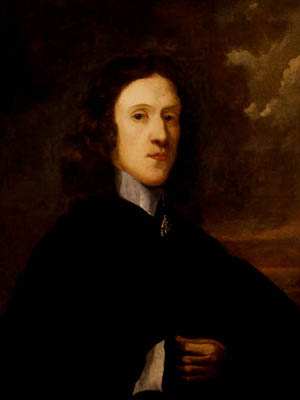
Williamsburg is an independent city in Virginia, United States. As of the 2020 census, it had a population of 15,425. Located on the Virginia Peninsula, Williamsburg is in the northern part of the Hampton Roads metropolitan area. It is bordered by James City County on the west and south and York County on the east.

The College of William & Mary is a public research university in Williamsburg, Virginia, United States. Founded in 1693 under a royal charter issued by King William III and Queen Mary II, it is the second-oldest institution of higher education in the United States and the ninth-oldest in the English-speaking world. It is classified among "R2: Doctoral Universities – High Research Activity". In his 1985 book Public Ivies: A Guide to America's Best Public Undergraduate Colleges and Universities, Richard Moll included William & Mary as one of the original eight "Public Ivies". The university is among the original nine colonial colleges.

Colonial Williamsburg is a living-history museum and private foundation presenting a part of the historic district in the city of Williamsburg, Virginia. Its 301-acre (122 ha) historic area includes several hundred restored or recreated buildings from the 18th century, when the city was the capital of the Colony of Virginia; 17th-century, 19th-century, and Colonial Revival structures; and more recent reconstructions. The historic area includes three main thoroughfares and their connecting side streets that attempt to suggest the atmosphere and the circumstances of 18th-century Americans. Costumed employees work and dress as people did in the era, sometimes using colonial grammar and diction.

Benjamin Stoddert Ewell was a United States and Confederate army officer, civil engineer, and educator from James City County, Virginia. He graduated from the U.S. Military Academy at West Point, New York in 1832 and served as an officer and educator.

Bruton Parish Church is located in the restored area of Colonial Williamsburg in Williamsburg, Virginia, United States. It was established in 1674 by the consolidation of two previous parishes in the Virginia Colony, and remains an active Episcopal parish. The building, constructed 1711–15, was designated a National Historic Landmark in 1970 as a well-preserved early example of colonial religious architecture.

The Wren Building is the oldest building on the campus of the College of William & Mary in Williamsburg, Virginia, which is the "nation’s second oldest seat of higher learning" in the United States. Situated in Old College Yard—of William & Mary's "Ancient Campus", near the more contemporary Merchants Square east of campus—the frequently visited Wren Building anchors that Campus, with its forecourt defined by two further old structures, Brafferton and the President's House. It's architecture is considered Georgian, and as a building in use by The College, and with a cornerstone laid in 1695, it is the oldest of academic buildings still standing and in use in the United States, and among the oldest buildings in Virginia. The Wren Building was designated a National Historic Landmark on October 9, 1960, and has appeared in the Virginia Landmarks Register since September 9, 1969.

Samuel Griffin was a lawyer, soldier and politician from Virginia. Following his service during the American Revolutionary War as a Continental Army officer, Griffin served as mayor of Williamsburg, Virginia, as well as represented the former state capitol in the Virginia House of Delegates, then in the U.S. House of Representatives.

Colonel John Page was an English-born planter, merchant, slave trader and politician who spent most of his life in North America. Born in East Bedfont, Middlesex, Page eventually migrated to the English colony of Virginia, where he lived in Middle Plantation and served as a member of the House of Burgesses from 1665 to 1677 and a member of the Virginia Governor's Council from 1677 to 1692. A wealthy landowner, Page donated land and funds towards construction of the Bruton Parish Church. Page was also involved in the establishment of the College of William & Mary in 1693, as well as being a chief proponent of Middle Plantation being designated the colony's capital in 1698.

The Brafferton is a building on the campus of the College of William & Mary in Williamsburg, Virginia. Built in 1723 and among the oldest buildings in Virginia, it was built as a school for Virginian Indians. The Brafferton is southeast of the Wren Building and faces the President's House. The three buildings were restored by the Colonial Williamsburg project during the early 20th century.

The West Virginia Mountaineer is the official mascot of West Virginia University (WVU). Selected annually since the 1930s from the university’s student body, the mascot is a popular tradition at the school. The Mountaineer appears in a buckskin outfit at West Virginia Mountaineers football games, men's and women's basketball matches, and other University-sponsored events.

The history of the College of William & Mary can be traced back to a 1693 royal charter establishing "a perpetual College of Divinity, Philosophy, Languages, and the good arts and sciences" in the British Colony of Virginia. It fulfilled an early colonial vision dating back to 1618 to construct a university level program modeled after Cambridge and Oxford at Henricus. A plaque on the Wren Building, the college's first structure, ascribes the institution's origin to "the college proposed at Henrico." It was named for the reigning joint monarchs of Great Britain, King William III and Queen Mary II. The selection of the new college's location on high ground at the center ridge of the Virginia Peninsula at the tiny community of Middle Plantation is credited to its first President, Reverend Dr. James Blair, who was also the Commissary of the Bishop of London in Virginia. A few years later, the favorable location and resources of the new school helped Dr. Blair and a committee of 5 students influence the House of Burgesses and Governor Francis Nicholson to move the capital there from Jamestown. The following year, 1699, the town was renamed Williamsburg.

Reveley, also known as the Griffin, is the mascot of The College of William & Mary. A mythical creature with the head of an eagle and the body of a lion, it was announced as William & Mary's mascot by President Taylor Reveley April 6, 2010. The Griffin mascot beat out the other four finalists: a King and Queen, a Phoenix, a Pug, and a Wren. The college hadn't had an official mascot since the late 1970s. It was named Reveley in 2018 to honor university president Taylor Reveley upon his retirement.

Julian Alvin Carroll Chandler, usually cited as J. A. C. Chandler, was an American historian, author and educator. He is best known as the 18th president of The College of William and Mary in Williamsburg, Virginia, where he served as the successor to retiring fellow educator and author Lyon Gardiner Tyler. Dr. Chandler is credited with transforming the institution from a small, struggling liberal arts college for men into a modern coeducational institution of higher learning.
The William & Mary Tribe baseball team represents the College of William & Mary in Williamsburg, Virginia in NCAA Division I competition. The school's team, founded in 1895, currently competes in the Colonial Athletic Association and play their home games at the off-campus Plumeri Park.
Petey is the mascot for the Canisius Golden Griffins, the athletic teams of Canisius College in Buffalo, New York, USA. Petey is an anthropomorphic golden griffin who performs live at all Canisius athletic events. Canisius adopted the nickname "Golden Griffins" for their school athletic teams in 1932, in honor of Great Lakes explorer La Salle's ship, Le Griffon. Canisius first used an unnamed costumed griffin as a sideline mascot in 1967. In preparation for the 2002–2003 athletic season, the griffin mascot was completely re-designed and given a new costume and name. The name "Petey" was chosen as a reference to St. Peter Canisius, who Canisius College is named for.
In 2005 the National Collegiate Athletic Association (NCAA) distributed a "self evaluation" to its member institutions for teams to examine the use of potentially offensive imagery with their mascot choice. This examination was done in accordance with NCAA policy that requires each member institution to maintain an "atmosphere of respect for and sensitivity to the dignity of every person." Fourteen schools either removed all references to Native American culture or were deemed not to have references to Native American culture as part of their athletics programs. Subsequently, 19 teams were cited as having potentially "hostile or abusive" names, mascots, or images, that would be banned from displaying them during post-season play, and prohibited from hosting tournaments.

The Williamsburg Bray School was a school for free and enslaved Black children founded in 1760 in Williamsburg, Virginia. Opened at Benjamin Franklin's suggestion in 1760, the school educated potentially hundreds of students until its closure in 1774. The house it first occupied is believed to be the "oldest extant building in the United States dedicated to the education of Black children".

The President's House is the residence of the President of the College of William and Mary in Virginia in Williamsburg, Virginia. Constructed in 1732, the building still serves its original purpose and is among the oldest buildings in Virginia. Since its construction only one of the college's presidents, Robert Saunders Jr., has not moved into the building, which is let for free to the president. The President's House is William & Mary's third-oldest building and the oldest official college presidential residence in the United States.

The Bodleian Plate is a copperplate depicting several colonial buildings of 18th-century Williamsburg, Virginia, as well as several types of native flora, fauna, and American Indians. Following its 1929 rediscovery in the archives of the Bodleian Library, it was used extensively in John D. Rockefeller Jr.'s reconstruction of Colonial Williamsburg. The plate has been tied to Williamsburg resident William Byrd II and may have been produced by English illustrator Eleazar Albin and engraver John Carwitham. It is dated to the 1730s.
















